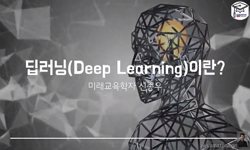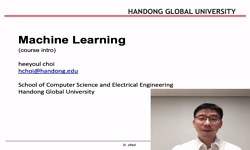Dementia, characterized by memory and cognitive impairment, necessitates early detection for symptom mitigation and progression delay. However, existing diagnostic approaches are resource-intensive, demanding both high cost and expertise, which compli...
http://chineseinput.net/에서 pinyin(병음)방식으로 중국어를 변환할 수 있습니다.
변환된 중국어를 복사하여 사용하시면 됩니다.
- 中文 을 입력하시려면 zhongwen을 입력하시고 space를누르시면됩니다.
- 北京 을 입력하시려면 beijing을 입력하시고 space를 누르시면 됩니다.

건식 뇌파 데이터를 활용한 경도인지장애 진단 인공지능 모델에 관한 연구 = A Study on Artificial Intelligence Model for Diagnosis of Mild Cognitive Impairment Using Dry Electroencephalogram Data
한글로보기https://www.riss.kr/link?id=A108573536
- 저자
- 발행기관
- 학술지명
- 권호사항
-
발행연도
2023
-
작성언어
Korean
-
주제어
뇌파 ; 치매 ; 머신러닝 ; 딥러닝 ; Electroencephalogram ; Dementia ; Machine learning ; Deep learning
-
등재정보
KCI등재
-
자료형태
학술저널
-
수록면
44-54(11쪽)
- DOI식별코드
- 제공처
-
0
상세조회 -
0
다운로드
부가정보
다국어 초록 (Multilingual Abstract)
Dementia, characterized by memory and cognitive impairment, necessitates early detection for symptom mitigation and progression delay. However, existing diagnostic approaches are resource-intensive, demanding both high cost and expertise, which complicates early intervention. In this study, we propose an optimal model and hyperparameter settings suitable for early dementia diagnosis using machine learning and deep learning models trained and tested on 19-channel electroencephalogram (EEG) data (50 normal subjects, 175 mild cognitive impairment subjects) collected via a dry methodology. While previous studies utilized 64-channel high-resolution EEG data acquired through a wet methodology, this study is distinct in its use of 19-channel dry EEG data, which reduces the burden on researchers and patients. The experiment was conducted by training a binary classifier using an ensemble-based AutoML algorithm, Auto-sklearn, and three deep learning models (ShallowFBCSPNet, Deep4Net, EEGNet), followed by a comparison of their respective performances. EEGNet demonstrated the best results (accuracy = 68.9%). Next, to address the overfitting problem due to data imbalance, four data imbalance processing algorithms (class weight, Gaussian noise, frequency shift, and undersampling) were applied to EEGNet. The best performance (accuracy = 78.9%) was achieved with Gaussian noise applied to EEGNet. This study’s findings suggest the potential utility of combining 19-channel dry EEG data with the proposed method for early dementia diagnosis.
국문 초록 (Abstract)
치매는 기억, 인지장애를 동반하는 노인질환으로, 증상 완화와 중증화 지연을 위해선 조기진단이 매우 중요하다. 그러나 현재 치매의 진단은 큰 비용과 높은 전문성을 요구하여 조기진단 및...
치매는 기억, 인지장애를 동반하는 노인질환으로, 증상 완화와 중증화 지연을 위해선 조기진단이 매우 중요하다. 그러나 현재 치매의 진단은 큰 비용과 높은 전문성을 요구하여 조기진단 및 치료가 어려운 실정이다. 본 연구에서는 건식 방식으로 수집된 19채널 뇌파(electroencephalogram) 데이터(정상군 50명, 경도인지장애군 175명)를 머신러닝 및 딥러닝 모델의 학습 및 테스트에 사용하여 치매의 조기진단에 적합한 모델 및 하이퍼파라미터 세팅을 제안한다. 기존의 연구들이 습식 방식으로 수집된 64채널 고해상도 뇌파 데이터를 활용한 반면, 본 연구는 연구자 및 환자의 측정부담이 적은 건식 방식의 19채널 뇌파 데이터를 활용했다는 점에서 차별성을 가진다. 실험은 앙상블 기반의 AutoML 머신러닝 알고리즘인 Auto-sklearn과 딥러닝 모델 3종(ShallowFBCSPNet, Deep4Net, EEGNet)으로 이진 분류기를 훈련한 후 성능을 비교하는 방식으로 진행되었다. 그 결과, EEGNet이 가장 우수한 성능 (정확도=68.9%)을 냈다. 다음으로, 데이터 불균형으로 인한 과적합 문제를 해결하기 위해 EEGNet에 데이터 불균형 처리 알고리즘 4종(class weight, Gaussian noise, frequency shift, undersampling)을 각각 적용한 뒤 성능 개선 여부를 확인했다. 그 결과, EEGNet에 Gaussian Noise를 적용했을 때 가장 우수한 성능 (정확도=78.9%)을 냈다. 본 연구 결과는 19채널 건식 뇌파 데이터와 제안된 방법의 조합이 치매의 조기진단에 활용될 가능성이 있음을 보인다.
동일학술지(권/호) 다른 논문
-
- 한국차세대컴퓨팅학회
- 조문택
- 2023
- KCI등재
-
- 한국차세대컴퓨팅학회
- 풍기훈
- 2023
- KCI등재
-
모바일 엣지컴퓨팅의 서비스 마이그레이션을 위한 최적 경로 알고리즘에 관한 연구
- 한국차세대컴퓨팅학회
- 김인혜
- 2023
- KCI등재
-
Channel-based Encryption for Identity-based Traceability for a Decentralized Network
- 한국차세대컴퓨팅학회
- 김종길
- 2023
- KCI등재





 eArticle
eArticle






